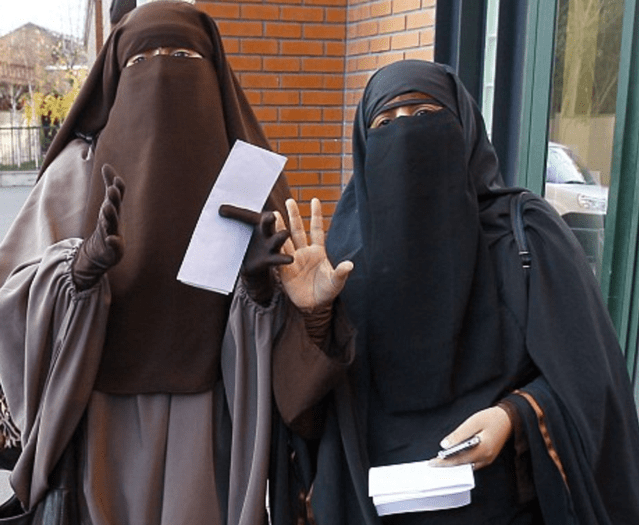By Nahiyan Helal
Liberté (liberty) is a concept often difficult to define, especially in terms of the boundaries by which it is limited. One may ask “What is freedom or liberty with boundaries?” To answer such a query, one must point to the general acceptance in progressive democratic societies that one may enjoy their freedom or liberty as long as it does not cause hinderance to another’s freedom or liberty. While it is easy to submit the notion, “as long as it does not cause hinderance to another’s freedom or liberty”, frequently, the task of identifying a ‘hinderance’ is not an easy one. This can be seen in the French ban on full-face coverings in public areas. While, reasons such as ‘social hinderance’ and ‘public security’ have been put forward as justifications for such a ban, it is tenuous to maintain such justifications when the freedom of expression (as enshrined in Article 10 of the European Convention on Human Rights (“ECHR”)) and freedom of thought, conscience and religion (as enshrined in Article 9 of the ECHR) of the veil-wearer comes in to play.
In September 2010, the French Parliament adopted a statute, banning the wearing of any dress, the aim of which is to hide one’s face, in the public space. The statute does not mention a burqa (a garment which covers the face entirely) or a niqab (a garment which covers the face but leaves a small slit for the eyes). The statute defines public space as comprising of public streets and places open to the public or used by public service. The law imposes a fine of up to 150 Euros and/or participation in ‘citizenship education’. The statute also penalises anyone who forces another person to wear face coverings with a fine of 30,000 Euros and 1 year in prison.
Justified call or tyrannical measure?
It was suggested that face coverings prevent the clear identification of a person, thus raising a security risk. This justification has some merit, in that, a potential male or female terrorist may hide himself/herself before carrying out a terrorist activity and may deny being identified by using freedom of religion as an excuse. The figures in relation to how many terrorist activities had been carried out by wearing a burqa or a niqab is not certain.
Secondly, another justification that is put forward, is that, face-covering results in ‘social hinderance’ in a society which relies on facial recognition and eye-contact for communication. This justification raises quite a few issues. It assumes that there is one ‘concrete’ French culture which everyone must adhere to. In a plural, multicultural society, the notion of one ‘concrete’ culture is not liberal in the slightest. It is important to note that freedom of religion also includes the freedom to manifest one’s religion or belief. A Muslim woman who voluntarily wears a burqa or niqab to manifest her religion, must be surely allowed to do so. Such a law also encroaches upon the individual autonomy of an individual, and therefore the law penalising the use of force to make another person to wear face-covering is justified.
Is clothing in the ambit of freedom of expression?
However, using the same logic, the personal autonomy of an individual cannot be restricted upon a fear, while supporting statistics are not present. Can a burqa or a niqab be construed as coming within the ambit of freedom of expression? It is respectfully submitted that the answer should be in the affirmative. If wearing a t-shirt which says ‘seize the means of production’ can be construed as such, it is difficult to see why the wearing of burqa or niqab should be treated any differently.
In fact, one of the provisions of the 1789 Declaration of the Rights of Man and the Citizen provides that, “Liberty consists in being able to do anything that does harm other people […]”.
Therefore, it is difficult to reconcile the notion of harm and the fear of harm in relation to face-covering, especially, in the absence of convincing statistics.
Let us consider the justification of facial-recognition and eye-contact even further. How would such a law treat an individual who has extreme face tattoos or extreme face piercings? Is it easy to recognise such individuals? This idea of fitting into cultures is not exclusive to France. After a long day, if an individual wanted to legally obtain a bottle of whiskey in Afghanistan, she would not be able to do so. Afghanistan cites religious reasons for the ban on alcohol; however, it is respectfully submitted that this is another instance of a society asking one to ‘fit in’.
In 2011, a 32-year old mother, Hind Ahmas, from France, was the first woman to be sent to prison for wearing a face-covering. It is again submitted that the very decision of imposing what a woman is allowed/not allowed to wear is antithetical to the aim of protection of human rights. On October 23, 2018, the United Nations Human Rights Committee concluded that France had not provided a strong enough reason for their ban of face-covering. The Committee suggested that such a ban would only ostracise a woman from the French community.

Hind Ahmas (left)
Religion is a sensitive matter and is often perceived by some as essential to their ‘being’. We also must appreciate the overall struggle to define and apply religion’s role in European societies at a time when established boundaries are being challenged by greater religious diversity. However, while acknowledging the struggle, I believe that, in a progressive, plural, multi-cultural society, a law impliedly banning the wearing of burqa or niqab publicly is a step away from social-cohesion and social-harmony.



